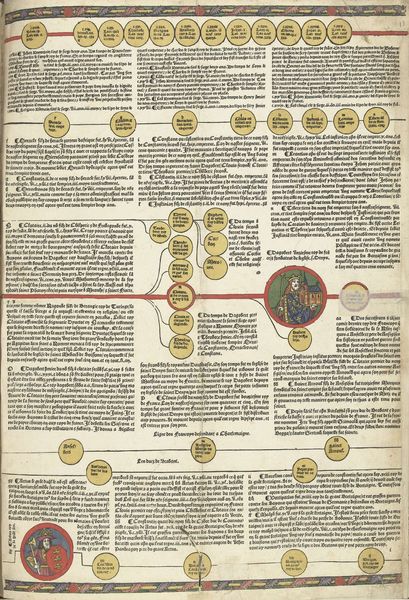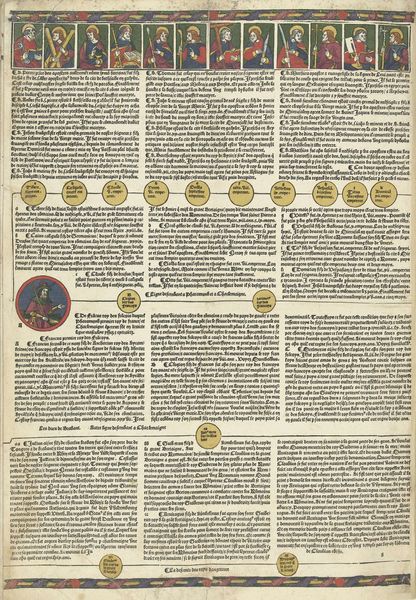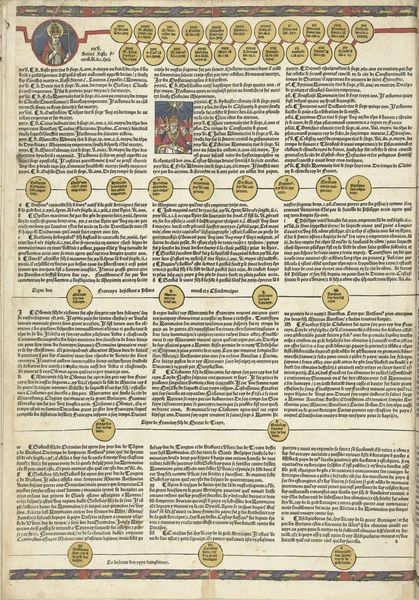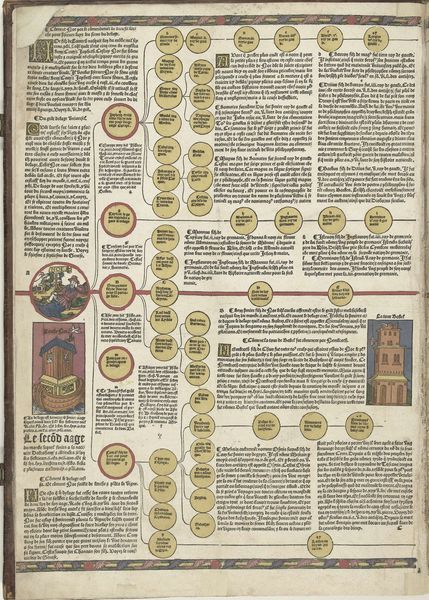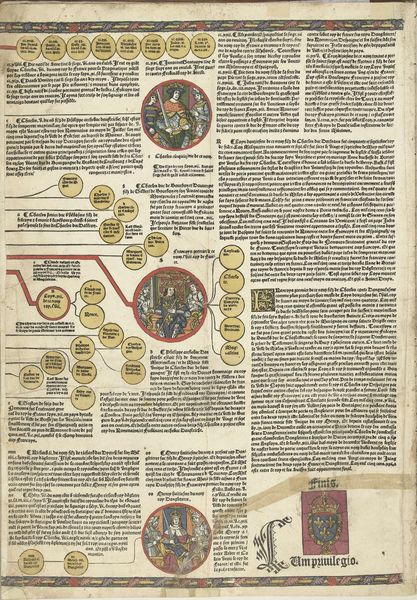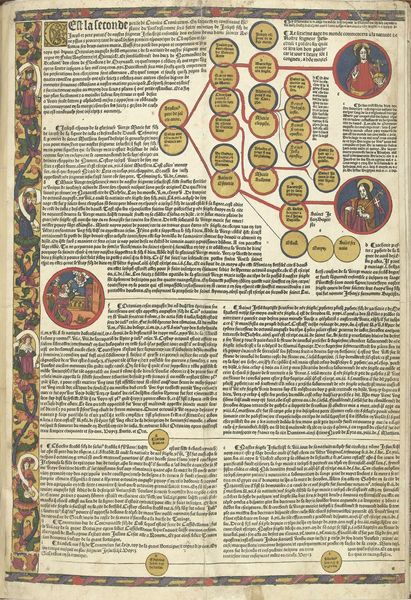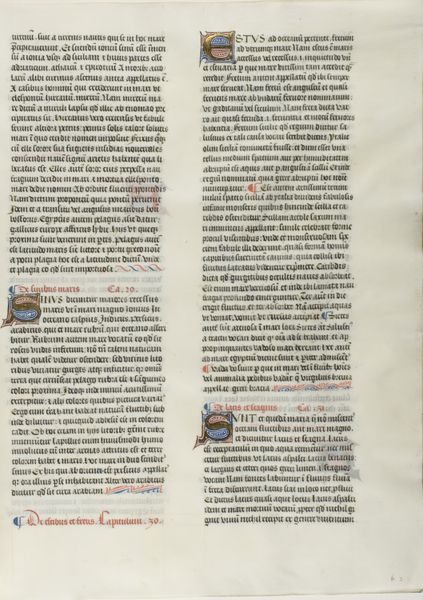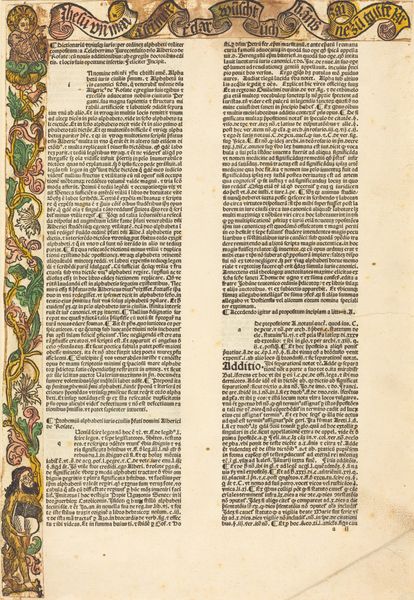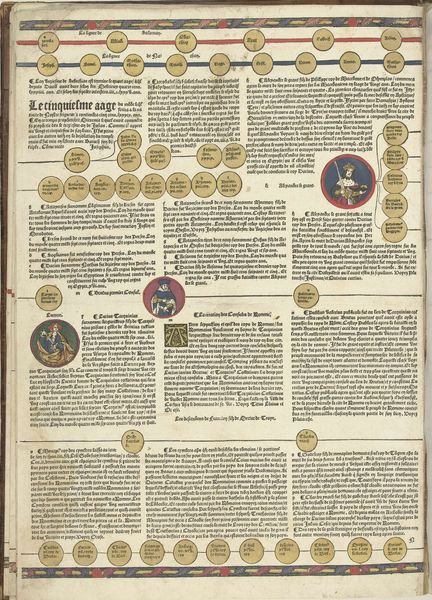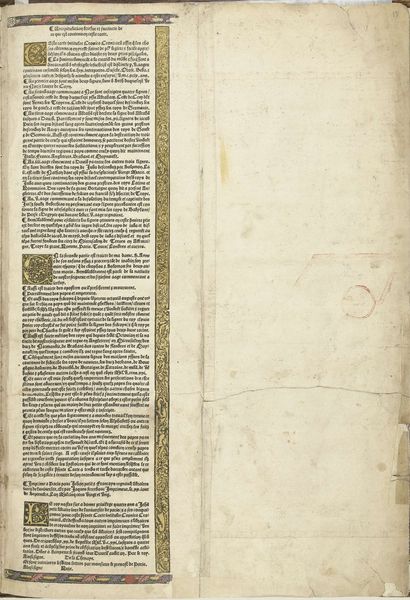
print, textile, woodcut
# print
#
textile
#
woodcut
#
history-painting
Dimensions: height 548 mm, width 381 mm
Copyright: Rijks Museum: Open Domain
Editor: Here we have a page, "Cronica Cronicarum (...), blad 6 recto," thought to be from sometime between 1521 and 1529 by an anonymous artist. It seems to be a woodcut print on textile. It's fascinating how information is organized. What are your initial thoughts about this page? Curator: Looking at this piece through a materialist lens, the woodcut is really interesting. We're seeing the convergence of artisanal skills and early industrial processes. The textile support speaks to the book's intended use – not just as an art object, but as a functional item likely intended for heavy handling. Editor: That makes sense. I hadn't thought about the textile's implications. It is the ‘enduring’ and functional character in comparison to modern disposable prints. Does the choice of materials imply something about the intended audience? Curator: Absolutely. This wasn't mass-produced in the modern sense, even though printing allowed for greater distribution than manuscripts. Consider the labor invested in creating the woodcut, preparing the textile, and the very act of printing. Who could afford such an item? How did they intend to use this "chronicle?" Was it a tool for governance, scholarship, or religious practice? Editor: So, by analyzing the materials and process, we can infer aspects of its socioeconomic context. Is there anything else you notice about how the information on this page is structured that we could unpack from a material perspective? Curator: Consider the circles and lines; they were made from wood that was painstakingly carved by a real person, so that this same real person could set the text, also carved in wood. What were the limitations inherent in that process? Does the circular nature impact legibility and usability in any significant way? Editor: It's less streamlined than a modern printed page; the imperfections of the woodcut give it character, but also indicate limitations on reproducibility and dissemination of knowledge. This brings more weight to your materialist analysis. I hadn't considered that perspective at all before. Curator: Exactly. It's all about examining the labor and materials that went into this object.
Comments
No comments
Be the first to comment and join the conversation on the ultimate creative platform.
